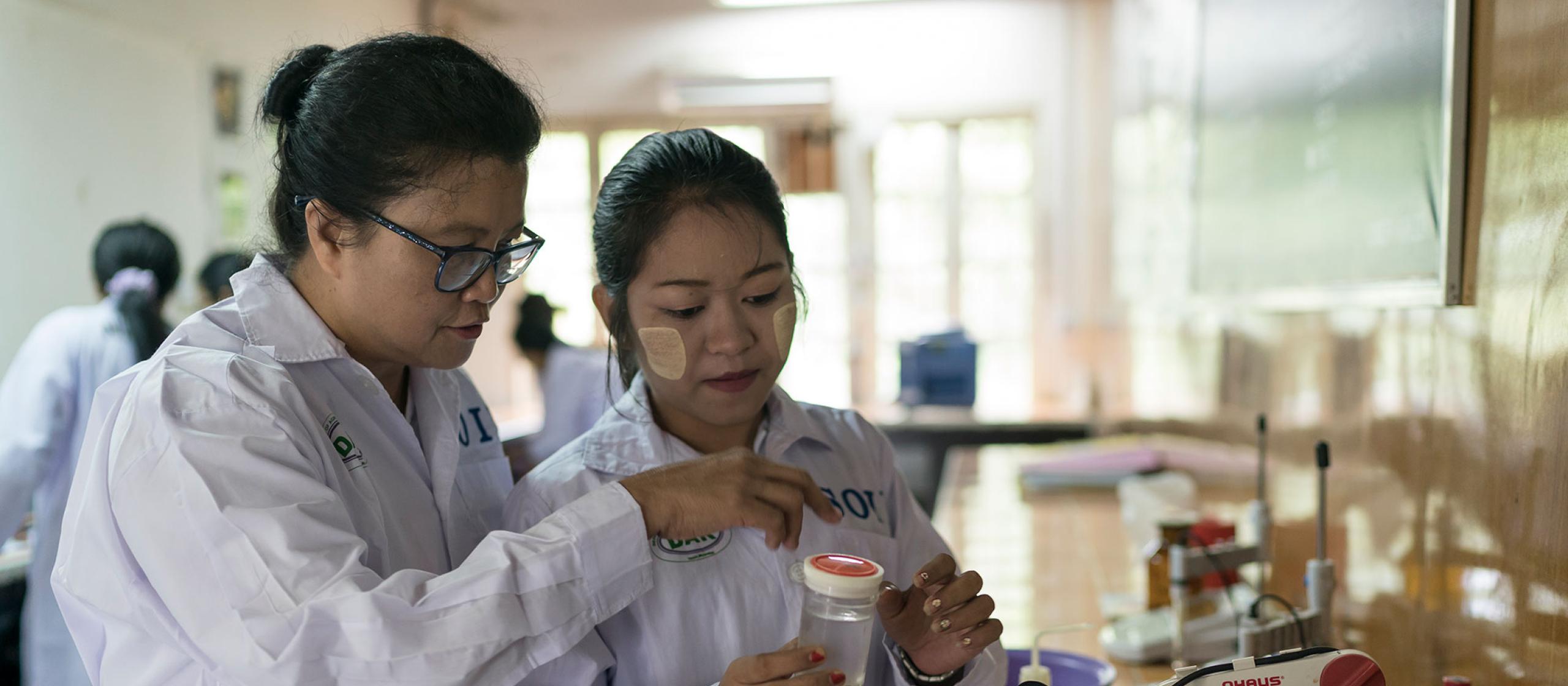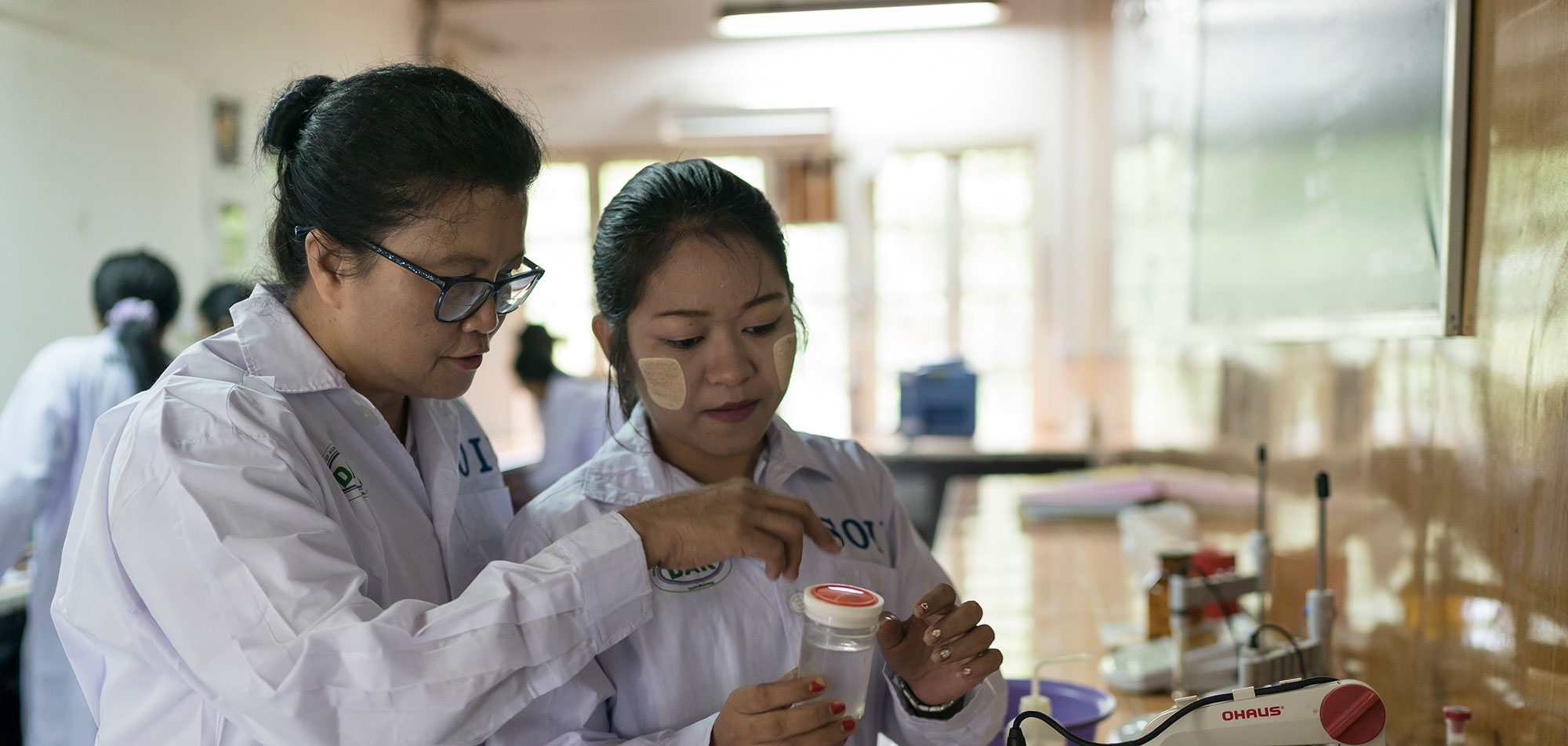- HomeHome
-
About ACIAR
- Our work
- Our people
-
Corporate information
- ACIAR Audit Committee
- Commission for International Agricultural Research
- Policy Advisory Council
- Agency reviews
- Executive remuneration disclosure
- Freedom of information (FOI)
- Gifts and benefits register
- Information publication scheme
- List of new agency files
- Contracts
- Legal services expenditure
- Privacy impact assessment register
- Commonwealth Child Safe Framework
- Benefits to Australia
- Careers
- 40 years of ACIAR
-
What we do
- Programs
- Cross-cutting areas
- Resources
- Where we work
-
Funding
- Research projects
- Fellowships
-
Scholarships
- John Allwright FellowshipScholarships to study in Australia for ACIAR partner country scientists to have Australian postgraduate qualifications
- ACIAR Pacific Agriculture Scholarships and Support and Climate Resilience Program
- Alumni Research Support Facility
- Publications
- News and Outreach
Date released
28 September 2021
A four-year project to map the state of public sector agricultural research capacity in South-East Asia and the Pacific region has given research funders and policymakers a window into the future, flagging challenges for public and private investment, staffing levels and policy direction.
The project marked the first time the global Agricultural Science and Technology Indicators (ASTI) data collection system has been used in the region to provide cross-country analysis of agricultural research in 10 countries, assessing resource allocation, performance and impact on productivity.
Project leader Mr Gert-Jan Stads from the International Food Policy Research Institute (IFPRI) says while there was historical data for the region from the 1980s, ACIAR funding allowed the ASTI project team to identify current key trends through surveys of more than 350 individual government agencies, non-profit organisations and higher education centres.
Country-level involvement
Key analysts were involved from each country to ensure the surveys reflected national circumstances and priorities, he says—a task made easier by assistance from the Asia-Pacific Association of Agricultural Research Institutions (APAARI) as a project partner.
‘Some countries wanted to be self-sufficient in a larger number of commodities to reduce their import bill, others said they had too many staff and needed to make their research more efficient, and the ageing of highly qualified researchers was an issue for many,’ Mr Stads explains.
‘Through the partnership with APAARI we also focused on teaching countries the methodology to collect this data themselves, because by devolving responsibility to the region, the type of information collected is much more relevant to the demands of each country and becomes a valuable advocacy tool.’
Positive signs
The project found that South-East Asia strengthened its agricultural research and development capacity during 2000–17, with all countries reporting higher numbers of researchers, improvements in their qualifications and a higher proportion of women in agricultural research and development.
But spending on agricultural research remained stagnant, despite considerable growth in agricultural output. South-East Asia’s research intensity—agricultural research spending as a share of agricultural GDP—steadily declined, from 0.50% in 2000 to just 0.33% in 2017.
The report concluded that more ambitious policy measures are needed to tackle the region’s underinvestment in agricultural research. This will ensure that research institutions stay adequately staffed into the future and strengthen research linkages, both in-country and at the subregional level, as well as target well-defined priority areas.
Changing times
ACIAR Chief Scientist, Dr Daniel Walker, says the organisation’s capacity-building team has been assessing the ASTI data and will use it as a guide to check and calibrate current programs and priorities.
‘Capacity building is one of ACIAR’s core mandates so to have these metrics across countries is very valuable. The challenge is how we use that information to make decisions and help partner countries to better target their investment in research,’ says Dr Walker.
‘We need to guard against the real risk of investment in ag research decreasing because of the lag between having capacity and achieving productivity, profitability and sustainability outcomes.’
The pattern of agricultural research investments globally has changed significantly in recent years, he says, and policy and investment needs are very different to those of the past.
‘There is an increasing proportion of private versus public sector activity, more research in middle income countries—particularly in Asia—and therefore declining proportional activity in OECD countries, but still very limited research conducted in the least developed countries.
‘The nature of the system changes over time. For example, when ACIAR first started working with Vietnam in the 1970s the country had limited research and innovation capacity by global standards. Now it’s an emerging economy with a very capable and entrepreneurial ag system. Having the current ASTI data is critical to inform our decisions.’
Tracking national progress
Updating the data is also important, Dr Walker says.
‘We need to update ASTI data as efficiently and effectively as possible so that it remains accurate and relevant. It’s expensive to do regularly but by building partnerships with government departments so that they own this, it will increase the ownership and efficacy of the information,’ he says.
Although the extent of underinvestment in agricultural research differs across countries, the report concluded that the region needs to increase its investment substantially to address future challenges more effectively and ensure productivity growth.
South-East Asia’s least developed agricultural research systems (in Cambodia, Laos and Myanmar) are characterised by low scientific output and researcher productivity as a direct consequence of severe underfunding and lack of sufficient well-qualified research staff.
While Malaysia and Thailand have significantly more developed agricultural research systems, they still report key inefficiencies and resource constraints that require attention.
Indonesia, the Philippines and Vietnam occupy intermediate positions between these two groups.
Investing for impact
ASTI’s projections reveal that prioritising investment in staple crops will still trigger the fastest agricultural productivity growth in Laos. However, Indonesia, Malaysia and Vietnam could achieve faster growth over the next 30 years by prioritising investment in research focused on fruit, vegetables, livestock and aquaculture.
In Cambodia, Myanmar and Thailand, the choice between focusing on staple crops versus high-value commodities was less pronounced, but projections did indicate that prioritising investments in oil crop research would trigger significantly lower growth in agricultural productivity.
Dr Walker says APAARI’s mandate for working across agricultural research institutes with more than 80 members in the region is invaluable in raising awareness and understanding of the value of this research.
APAARI Executive Secretary Dr Ravi Khetarpal says the ASTI project has built on strong partnerships to provide a platform for skilling up and scaling out research outputs, innovation and technology, and this could be carried into the broader Pacific region.
‘As part of the project we did a lot of outreach and communications and I could see that there was a whole-of-government willingness for this qualitative progress to be translated into actions,’ Dr Khetarpal says.
‘APAARI is in discussions with the Pacific Community (SPC), to carry this mission to islands of the Pacific to quantify the impact of agricultural research there and deliver programming to better harmonise research with South-East Asia.
‘While there is a funding crunch in most of the developing countries, ASTI provides a rationale to help members strengthen investment in ag research as part of their planning process and increase their capacity to contribute to sustainable development goals.’
Mr Stads says there is already evidence that the ASTI information is being included in strategy planning for agriculture investment frameworks in Laos, Myanmar, Papua New Guinea, the Philippines and Vietnam.
ACIAR project
- Monitoring Agricultural Research Investments, capacity and impact in South-East Asia and the Pacific, GP/2016/093.




